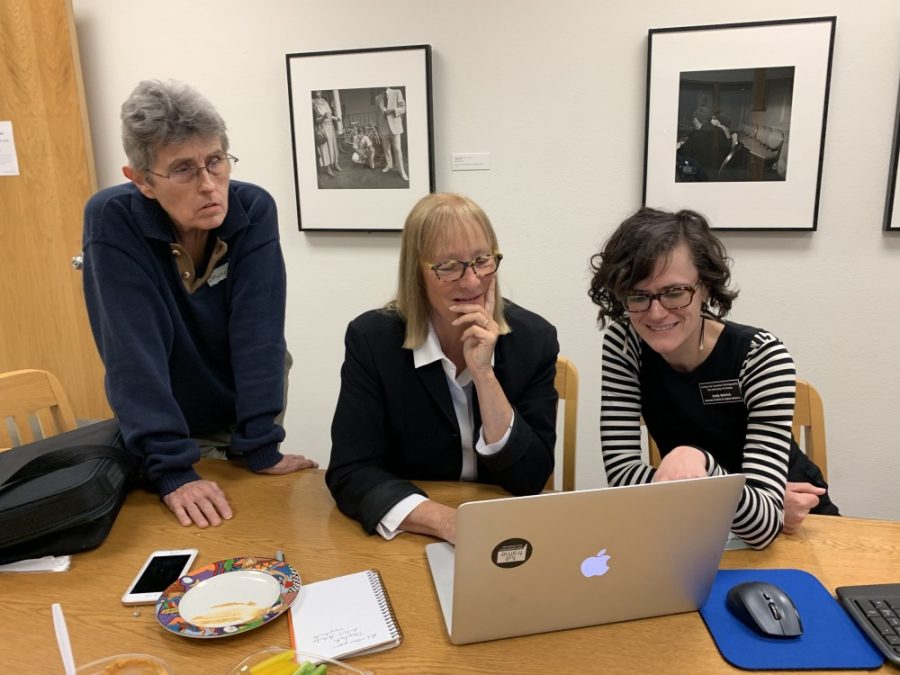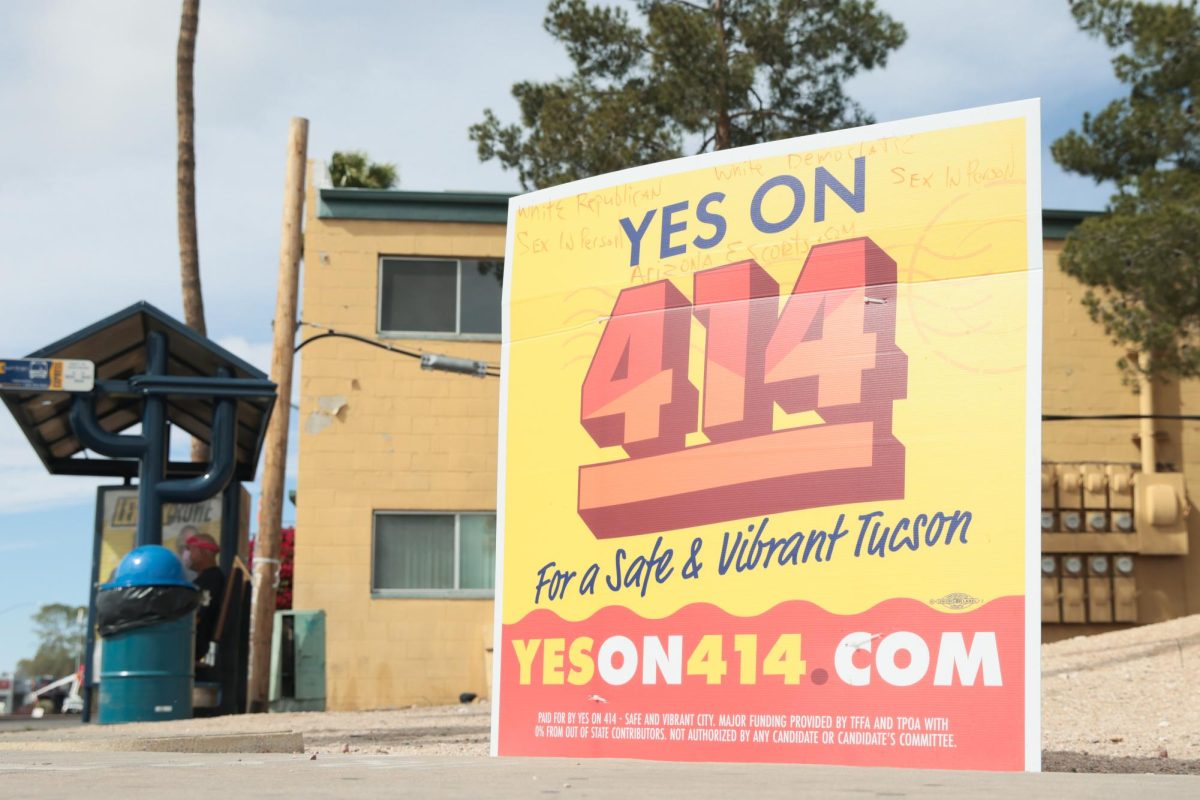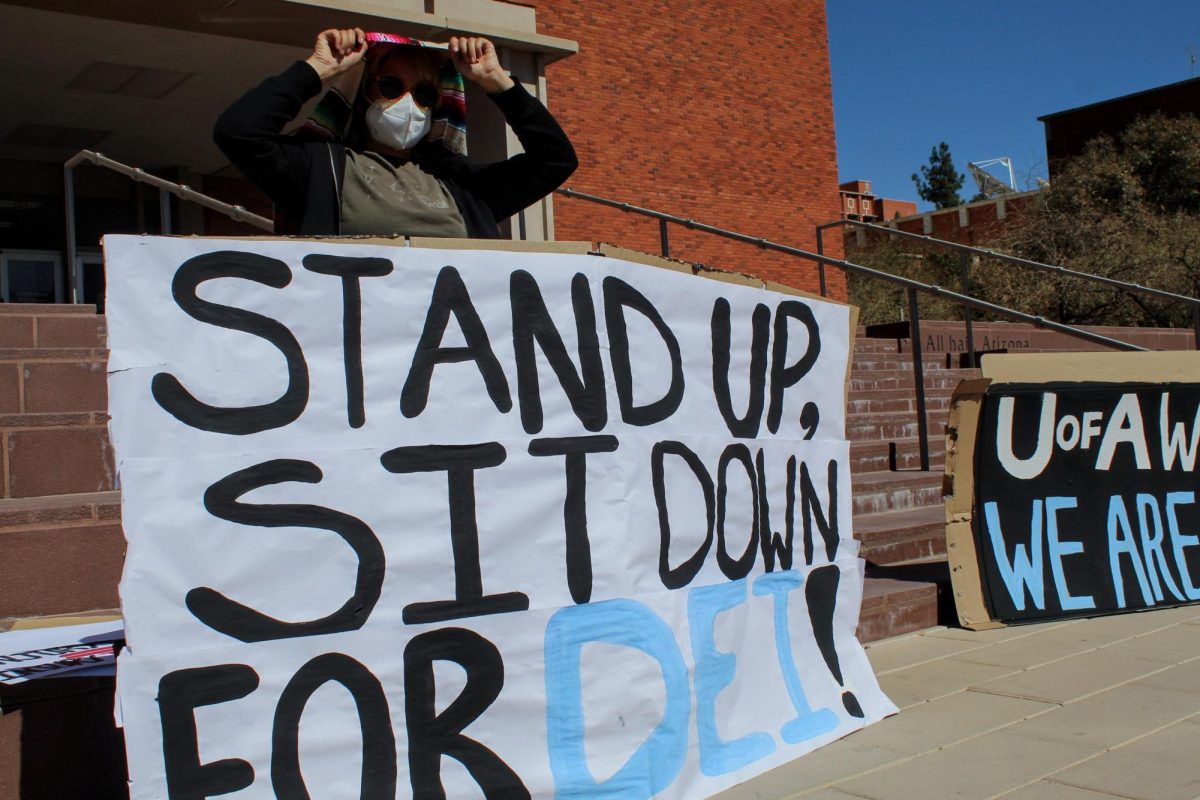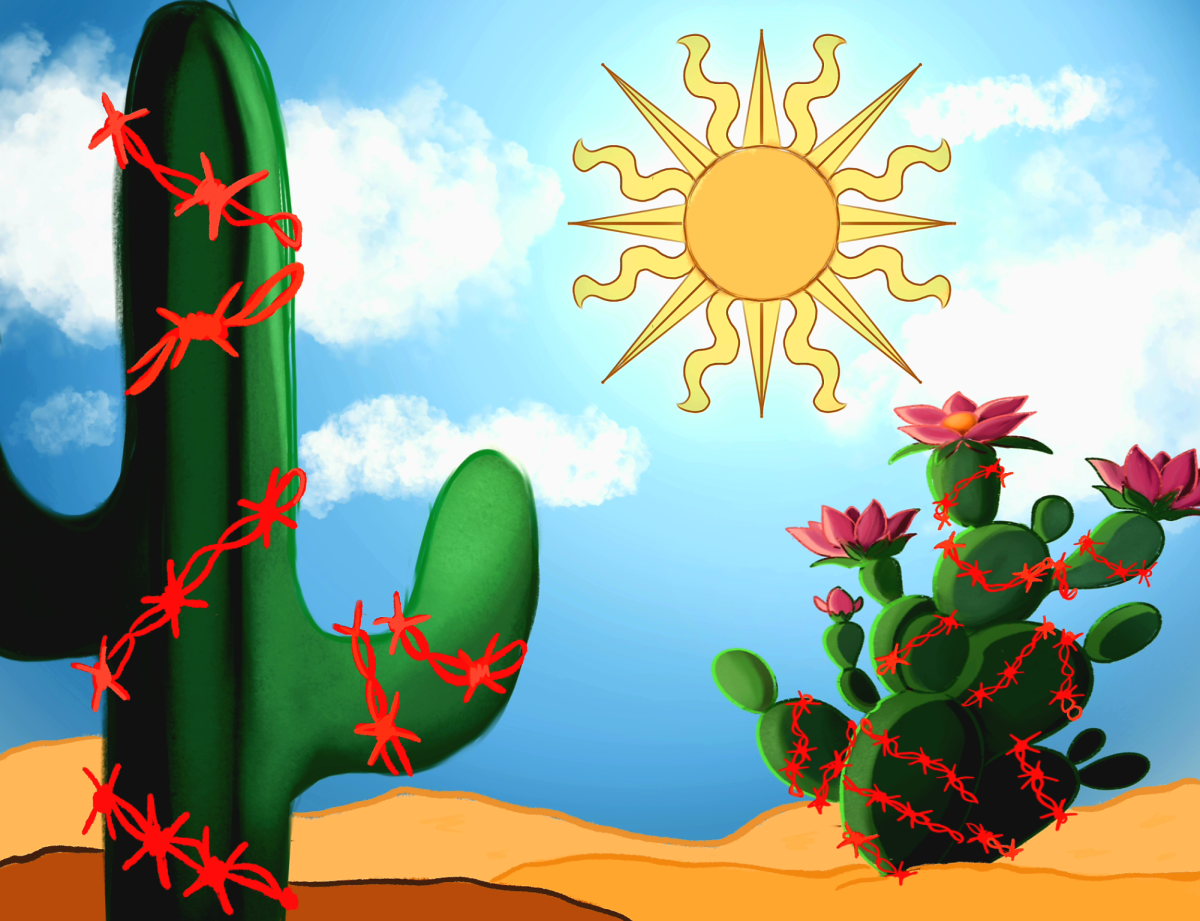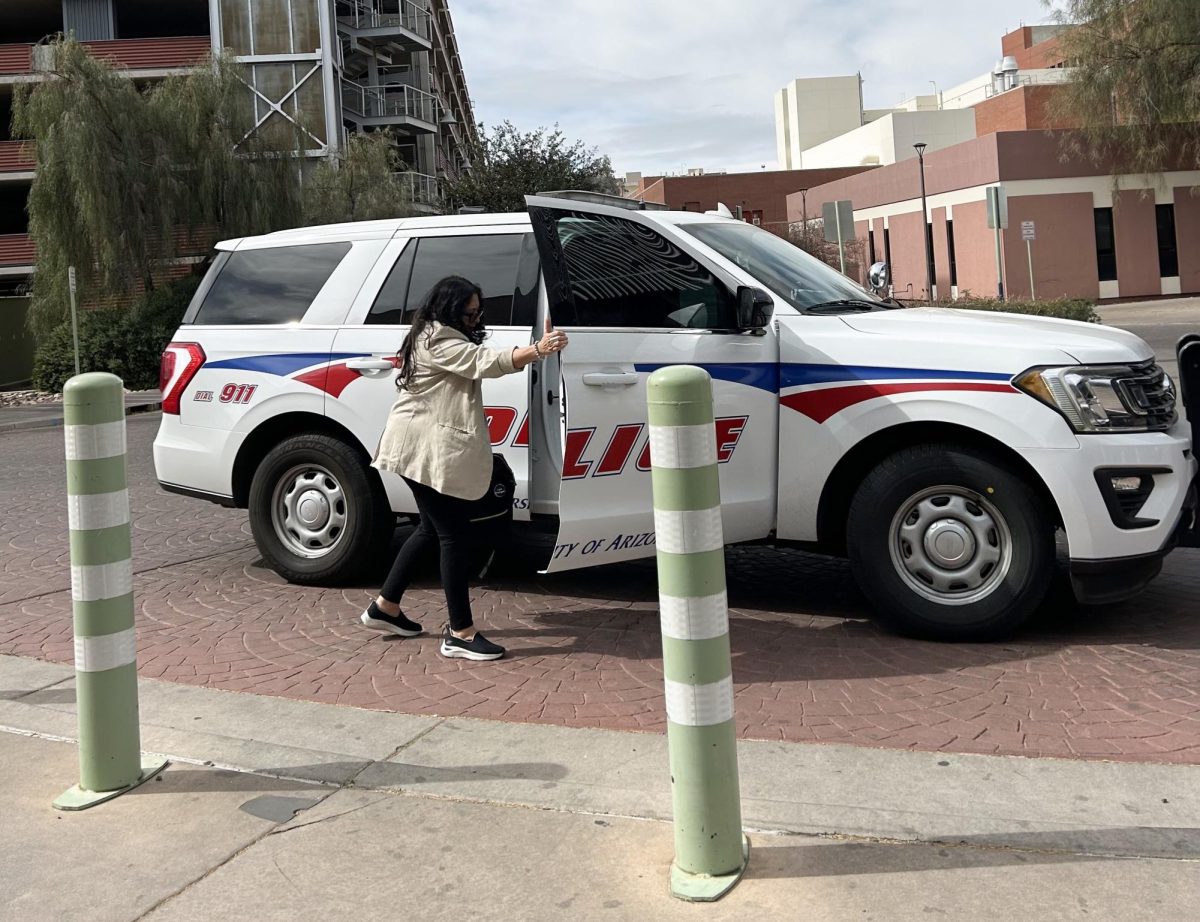The Center for Creative Photography at the University of Arizona hosted its second Art + Feminism Wikipedia edit-a-thon from 10 a.m. to 4 p.m. Friday, March 22.
Started in 2014, Art + Feminism is a global project that works to teach people, mainly women, how to create Wikipedia pages and add information to existing pages about cisgender and transgender women, feminism and the arts. According to its website, less than 10 percent of Wikipedia editors identify as women, and the project wants to grow that number.
CCP’s event this year focused on improving and increasing the Wikipedia presence of female photographers.
RELATED: Native youth build media advocacy skills through workshop
Emily Weirich is the associate archivist for digital initiatives at the CCP. She was the organizer of this event, providing snacks, assistance and resources to the attendees.
Weirich and the participants wrote out names of certain photography-related women whose Wikipedia pages they wanted to add content to during the session.
Using the slideshow tutorials available on the Art + Feminism website, Weirich taught attendees how to properly edit and add citations to existing Wikipedia pages; new users cannot create new pages on Wikipedia.
“Your account has to be more than three days old, and you have to have made 10 edits already,” Weirich said. “So you have to have some practice in before they’ll let you create your own content.”
Tutorials on the Art + Feminism website cover basic rules of editing, adding citations, navigating Wikipedia pages and closing the gender gap on Wikipedia. The tutorials are accessible any time for anyone who wants to learn on their own.
Ann Fessler was an attendee at the event. She is a UA graduate school alumna and retired director of the graduate program at Rhode Island School of Design who is staying in Tucson for half the year.
Fessler said she wanted to learn more about editing articles and always goes to events at the CCP. When she saw the event was coming up, she said she knew she had to go.
“Articles about women, unless women are going to do it, they might not get added or fleshed out,” Fessler said. “It’s important, because it becomes a historic record.”
Marcia Reed is a retired still photographer who has worked on over 50 films. She said there is a Wikipedia page about her, as she was the first female still photographer to join the International Cinematographers Guild. She drove four hours to attend the event and learn more about the process of making and editing Wikipedia pages.
“I’m fascinated; it’s well worth it,” Reed said. “I feel that women are underrepresented just in general, and when you look at the whole situation of men being mainly the editors, it’s unbalanced.”
Weirich said there are certain rules to follow when editing Wikipedia content to ensure information is reliable. New edits get checked by Wikipedia and can be taken down or removed if they did not follow the guidelines.
“The way that you can avoid having someone take your content down is to remember the five pillars and then follow the seven basic rules for editing,” Weirich said.
Art + Feminism combined Wikipedia’s “five pillars” and “core content policies” to make up the seven basic rules for editing: staying neutral, maintaining verifiability, no originality, not writing about a conflict of interest, using reliable sources, testing notability and not making a stub – an article that is too short.
RELATED: UA Poetry Centerites for criminal just reform with arts grant
Attendees said they learned a lot at the event and now feel equipped with the resources and tools they need to keep editing and adding to Wikipedia in the future.
“What would be fun is to come back next year and see if we’ve progressed,” Reed said.
Weirich said she wants to expand the information available about women on Wikipedia and empower people to edit Wikipedia so there are more people “contributing to the content that’s there.” She said she wants to get people excited about the idea and help them get started.
“As a CCP staff person who is interested in ways that we can connect arts research to people on the internet … this is one of the ways that we can do that,” Weirich said.
Follow Quincy Sinek on Twitter



